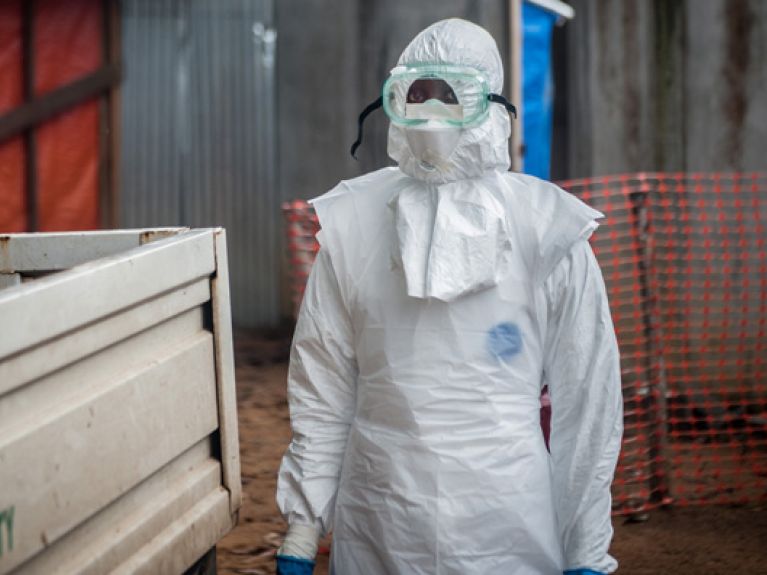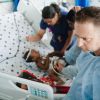Supporting the battle against the Ebola virus
The mobile laboratory of a European consortium is helping to contain the epidemic.

It is hard to imagine a more treacherous bug: when a person contracts the life-threatening Ebola virus, the pathogen first spreads throughout the body unnoticed and multiplies in key organs. An infected person generally only shows the first symptoms after 8 to 14 days. Unfortunately, these are anything but clear: fever accompanied by weakness and nausea, plus headaches and muscle pain – typical symptoms of many different diseases. By the time an Ebola sufferer has reached the advanced stage with the bleeding typically associated with the disease, he or she may well have infected several other people. Lives can therefore be saved by a quick and precise laboratory diagnosis, something that is also true of other tropical diseases such as Lassa fever.
With a view to containing outbreaks of such diseases as swiftly as possible, a consortium of European and African research institutions has jointly initiated the European Mobile Laboratory, or EMLab for short. Launched in December 2011, the project is coordinated by the Bernhard Nocht Institute for Tropical Medicine in Hamburg and funded by the European Union under its EuropeAid programme to the tune of 3.5 million euros. Since March 2014, the concept has been put to the test in practice for the first time – in combating the Ebola epidemic in West Africa. “We work very closely with the WHO and the organisation Doctors Without Borders,” reports diagnostics expert Thomas Strecker from the Institute of Virology at Philipps-Universität Marburg, which is likewise involved in the project.
Essentially, the EMLab comprises three mobile diagnostic laboratories. The entire equipment of one such unit, explains Strecker, fits into 15 portable transport containers. “The containers can be taken on board commercial aircraft to almost anywhere in the world.” One of the labs is currently stationed in Guéckédou, Guinea, at the heart of the Ebola-hit region. Thomas Strecker has already spent two four-week periods working there as a team leader. As the expert explains, one of the biggest advantages of the EMLab is the fact that it is not dependent on any local energy supply: the facility can be run off simple generators or even a vehicle engine. The Institute of Microbiology of the Bundeswehr, the German Armed Forces, in Munich was mainly responsible for technical planning of the EMLab.
In Guéckédou, the EMLab teams not only perform molecular genetic detection of Ebola virus infection, but also carry out numerous quick tests for malaria – to allow differential diagnostics of the symptoms, which are difficult to classify. The second EMLab was stationed at the Irrua Specialist Teaching Hospital in Nigeria and is likewise in operation. The third lab, which has only just been completed, is still in Rome at the Italian project partner Istituto Nazionale per le Malattie Infettive L. Spallanzani. This part of the EMLab could also be deployed in West Africa in the near future. ▪
Kurt de Swaaf

